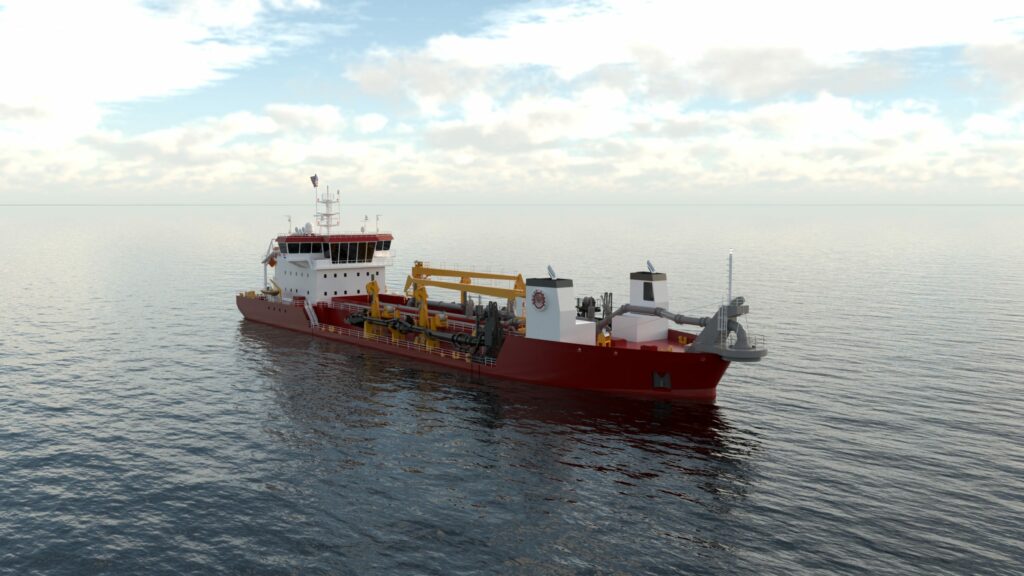C-Job Discipline: Naval Architecture
The creation of a functional and effective ship design draws on the expertise of multiple disciplines. While these all work in a synergetic relationship throughout the entire design process, it is notable that one area of knowledge in particular forms the foundation of ship design. This is Naval Architecture. “Naval architecture is the starting point. Without a starting point, we cannot create something great,” opens C-Job Naval Architect Stijn de Geest.

Highlighting the relevance of the subject in the design process further, Kevin Houwaart, also a Naval Architect at C-Job, adds, “In fact, a lot of our concept designs are naval architectural. This is when we try to come up with the best possible main particulars; already in the earliest stage of design. Once we have created a layout in collaboration with the client, then we can continue further. Other disciplines like Structural and Mechanical Engineering come in at a later phase.”
Combining science with art
Naval Architecture carries so much weight in the early design stages that it is not surprising that it lays down a number of fundamental characteristics of a ship. It is a highly technical subject that involves three key elements, as Stijn explains: “It is about creating a hull that has sufficient stability, in an arrangement in which all the equipment fits, and that generates as little resistance as possible.”
The internal arrangement of a vessel, therefore, plays a major role in naval architecture because it forms part of the stability equation. Internal arrangement determines the positioning of compartments and bulkheads, which enable water tightness. It is also the crucial question to address when deciding on the best location for all the mission equipment, which affect not only stability, but functionality too.
“However, naval architecture is more than just science,” Kevin adds. “It has an aesthetic aspect too. It is about creating a vessel that looks good too – even elegant. An interesting trend is that aesthetics is becoming more important for working vessels: it is not just something for yachts.”
Indeed, gone are the days when workboats received minimal attention regarding looks. Today, owners of the so-called workhorse boats – dredgers or fishing vessels, for example – are asking for more attractive designs. Scrolling through C-Job’s design portfolio, it is clear that the company is meeting this challenge successfully.
At this point, it is important to state that C-Job’s naval architects do not use their skills solely for creating new vessel designs; they work on retrofit projects too. “It is quite common that existing vessels change their equipment or function,” notes Stijn. “Because these conversions and refits change the layout, and therefore the stability, it is necessary to renew stability recalculations. This is a service that we can also provide.”

C-Job Naval Architects recently delivered the basic design of this TSHD to GLDD
Keeping projects ‘on track’
The aforementioned synergy between the numerous disciplines is necessary to ensure efficiency across all design phases. This is something that C-Job is proactively promoting (after all, a collaborative working atmosphere does not just appear out of nowhere – it has to be created). “This is why we established the Discipline Coordination Team, headed by Alexander van den Ing, Kevin and myself,” says Stijn. “Our job is to share knowledge and skills throughout the different offices. If anyone has a design challenge, either we can help them or we can direct them to the right person. We also ‘anchor’ our broad range of knowledge of our organization via an open source that is accessible to all our colleagues. These methods of connecting people and knowledge are going very well.”
Multidisciplinary meetings serve as an effective way to communicate between all the various engineering departments. “We start with the global layout and then include all the systems that we need,” says Kevin. “There is always lots of piping – this means we work closely with the mechanical engineering department to work out the optimum routing of piping throughout the vessel. Then we also have to work with the structural engineering department to see the effects on structural integrity and stability.”
C-Job’s added value
The fact that this communicative and collaborative philosophy is embedded into C-Job’s way of working means that knowledge is shared across disciplines, personnel and projects. Stijn: “I think this is one of our strongest points – the broad scope of experience that we have from working on so many different types of ship, across a wide range of maritime sectors. Yes, each ship type has its own characteristics, but it is possible to learn from one ship type and apply that knowledge in another. Furthermore, it doesn’t matter what your function is in our organization or project, people can always share their experiences or opinion with colleagues. Everybody is willing to listen and open to new ideas.”
Kevin points to the unique design process at C-Job which is part of the ‘added value’ that the company can offer its clients. “With every project, we start off with a blank piece of paper instead of using something off the shelf” he says. “Combined with our independent position, this means that our clients become the owner of a one-of-kind design that is completely tuned to their needs. It is a very powerful point.”